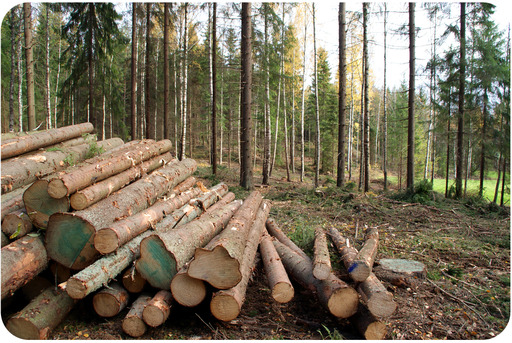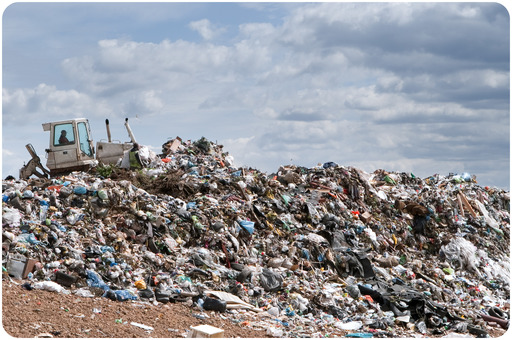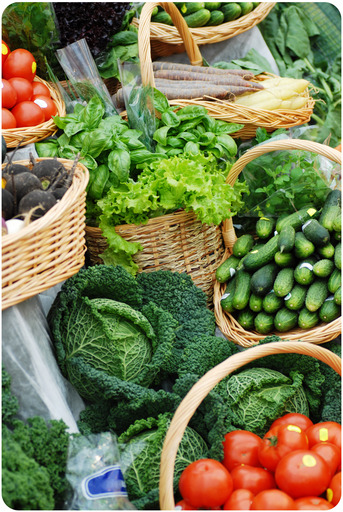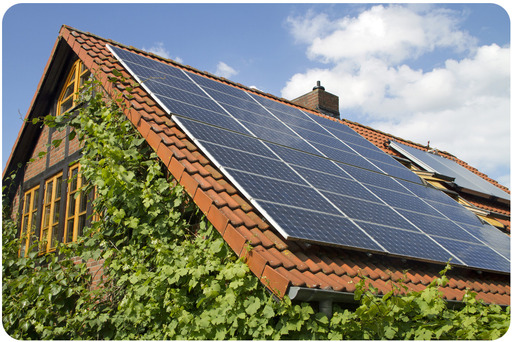

It was once a mountain. Now it’s called the “richest hole in Earth.” It produces almost 2 billion dollars worth of metals each year. What is it? It’s the Kennecott Copper Mine in Utah. It’s the world’s biggest open-pit mine. In fact, it’s the biggest hole humans have ever dug on Earth’s surface. It’s so big that it can be seen from space. It’s 1.2 kilometers (0.75 miles) deep. If it were a stadium, it could seat more than 9 million people!
Metals such as those from the Kennecott Copper Mine are important natural resources. What other resources do we use? And how do we obtain them? Are metals and other resources in danger of being used up? In this chapter, you’ll find out.
A natural resource is anything in nature that humans need. Metals and fossil fuels are natural resources. But so are water, sunlight, soil, and wind. Even living things are natural resources.
We need natural resources for just about everything we do. We need them for food and clothing, for building materials and energy. We even need them to have fun. Table below gives examples of how we use natural resources. Can you think of other ways we use natural resources?
Table 20.1Use of Natural Resources
| Use | Resources | Example |
|
Vehicles 
|
Rubber for tires from rubber trees Steel frames and other metal parts from minerals such as iron |
iron ore 
|
|
Electronics 
|
Plastic cases from petroleum products Glass screens from minerals such as lead |
lead ore 
|
|
Homes 
|
Nails from minerals such as iron Timber from trees |
spruce timber 
|
|
Jewelry 
|
Gemstones such as diamonds Minerals such as silver |
silver ore 
|
|
Food 
|
Sunlight, water, and soil Minerals such as phosphorus |
corn seeds in soil 
|
|
Clothing 
|
Wool from sheep Cotton from cotton plants |
cotton plants 
|
|
Recreation 
|
Water for boating and swimming Forests for hiking and camping |
pine forest 
|
Some natural resources are renewable. Others are not. It depends in part on how we use them.
Renewable resources can be renewed as they are used. An example is timber, which comes from trees. New trees can be planted to replace those that are cut down. Sunlight is a renewable resource. It seems we will never run out of that!
Just because a resource is renewable, it doesn’t mean we should use it carelessly. If we aren’t careful, we can pollute resources. Then they may no longer be fit for use. Water is one example. If we pollute a water source it may not be usable for drinking, bathing or any other type of use. We can also overuse resources that should be renewable. In this case the resources may not be able to recover. For example, fish are renewable resources. That’s because they can reproduce and make more fish. But water pollution and overfishing can cause them to die out if their population becomes too low. Figure below shows another example.

Forests should be renewable resources. The forest on the left is healthy and is used for recreation. The forest on the right was killed by acid rain. Human use: hiking and bird watching. Human misuse: destruction by acid rain.
Some resources can’t be renewed. At least, they can’t be renewed fast enough to keep up with use. Fossil fuels are examples. It takes millions of years for them to form. We are using them up much more quickly. Elements that are used to produce nuclear power are other examples. They include uranium. This element is already rare. Sooner or later, it will run out.
Supplies of nonrenewable resources are shrinking. This makes them harder to get. Oil is a good example. Oil reserves beneath land are running out. So oil companies have started to drill for oil far out in the ocean. This costs more money. It’s also more dangerous. Figure below shows an oil rig that exploded in 2010. The explosion killed 11 people. Millions of barrels of oil spilled into the water. It took months to plug the leak.

This oil rig was pumping oil from below the ocean floor when it exploded.
Rich nations use more natural resources than poor nations. In fact, the richest 20 percent of people use 85 percent of the world’s resources. What about the poorest 20 percent of people? They use only 1 percent of the world's resources. Figure below shows this for two types of resources.

The U.S. uses more than its share of paper and oil. What if everyone used resources this way? We would need five times more space to produce what was used! (Note: Per capita means
Imagine a world in which everybody had equal access to resources. Some people would have fewer resources than they do now. But many people would have more. In the real world, the difference between rich and poor just keeps growing.
Every 20 minutes, the human population adds 3,500 more people. More people need more resources. For example, we now use five times more fossil fuels than we did in 1970. The human population is expected to increase for at least 40 years. What will happen to resource use?
How can we protect Earth’s natural resources? One answer is conservation. This means saving resources. We need to save resources so some will be left for the future. We also need to protect resources from pollution and overuse.
When we conserve resources, we also cut down on the trash we produce. Americans throw out 340 million tons of trash each year. We throw out 2.5 million plastic bottles alone — every hour! Most of what we throw out ends up in landfills. You can see a landfill in Figure below. In a landfill, all those plastic bottles take hundreds of years to break down. What are the problems caused by producing so much trash? Natural resources must be used to produce the materials. Land must be given over to dump the materials. If the materials are toxic, they may cause pollution.

A bulldozer crushes a mountain of trash.
You probably already know about the three "R"s. They stand for reduce, reuse, and recycle. The third "R" — recycle — has caught on in a big way. That’s because it’s easy. There are thousands of places to drop off items such as aluminum cans for recycling. Many cities allow you to just put your recycling in a special can and put it at the curb.
We haven’t done as well with the first two "R"s — reducing and reusing. But they aren’t always as easy as recycling. Recycling is better than making things from brand new materials. But it still takes some resources to turn recycled items into new ones. It takes no resources at all to reuse items or not buy them in the first place.
Reducing resource use means just what it says — using fewer resources. There are lots of ways to reduce our use of resources.

Buying locally grown produce at a farmer's market saves resources.
About a third of what we throw out is packaging. Try to buy items with the least amount of packaging. For example, buy bulk items instead of those that are individually wrapped. Also, try to select items with packaging that can be reused or recycled. This is called precycling. Pop cans and plastic water bottles, for example, are fairly easy to recycle. Some types of packaging are harder to recycle. You can see examples in Figure below. If it can’t be reused or recycled, it’s a waste of resources.

These types of packaging are hard to recycle. Could you reuse any of them?
Reusing resources means using items again instead of throwing them away. A reused item can be used in the same way by someone else. Or it can be used in a new way. For example, Shana has a pair of jeans she has outgrown. She might give them to her younger sister to wear. Or she might use them to make something different for herself, say, a denim shoulder bag. Some other ideas for reusing resources are shown in Figure below.

Do you reuse products such as these? Can you think of other ways to reuse resources?
Many things can be recycled. The materials in them can be reused in new products. For example, plastic water bottles can be recycled. The recycled material can be made into t-shirts! Old phone books can also be recycled and made into textbooks. When you shop for new products, look for those that are made of recycled materials (see Figure below). Even food scraps and lawn waste can be recycled. They can be composted and turned into humus for the garden.

This label shows that the product was made from recycled materials.
At most recycling centers, you can drop off metal cans, cardboard and paper products, glass containers, and plastic bottles. Recycling stations like the one in Figure below are common. Curbside recycling usually takes these items too. Do you know how to recycle in your community? Contact your local solid waste authority to find out. If you don’t already recycle, start today. It's a big way you can help the planet!

Are there recycling stations like this one where you live?
1. Define natural resource.
2. Name an item you use each day. What natural resources were used to make it?
3. Contrast resource use in wealthy and poor nations.
4. What is conservation?
5. What is precycling?
6. Create a mobile or bulletin board display that shows how to use the three Rs to conserve resources.
7. Compare and contrast renewable and nonrenewable resources. Give an example of each.
8. Why do we need to use renewable resources carefully?
Like other resources, we use energy resources in many ways. Energy resources also need to be conserved.
Everything we do uses energy. From taking a breath to blasting off in a rocket, everything takes energy. And all that energy must come from somewhere!
Think about your typical day. How do you use energy? Do you take a shower when you first get out of bed? What about taking a shower uses energy? It takes energy to heat the water and to pump the water to your home. Do you eat a hot breakfast? Energy is used to cook your food. Do you ride a bus or have someone drive you to school? Motor vehicles need energy from fossil fuels to run.
Figure below shows the major ways energy is used in the U.S. A lot of energy is used in homes. In fact, more energy is used in homes than in stores and businesses. Even more energy is used for transportation. A lot of fuel is necessary to move people and goods around the country. Industry uses the most energy. Industrial uses account for one-third of all the energy used in the U.S.

What percent of energy in the U.S. is used for transportation and in homes?
Figure below shows the energy resources used in the U.S. The U.S. depends mainly on fossil fuels. Petroleum is used more than any other resource. Renewable energy resources, such as solar and wind energy, could provide all the energy we need, but they are not yet widely used in the U.S.

The U.S. gets 85 percent of its energy from fossil fuels. Where does the other 15 percent come from?
We must use energy to get energy resources. This is true of nonrenewable and renewable energy. Getting fossil fuels so that they can be used takes many steps. All of these steps use energy.
Consider petroleum as an example. Oil companies explore for petroleum in areas where they think it might be. When they find it, they must determine how much is there. They must also know how hard it will be to get. If there's enough to make it worthwhile, they will decide to go for it. To extract petroleum, companies they must build huge rigs, like the one in Figure below. An oil rig drills deep into the ground and pumps the oil to the surface. The oil is then transported to a refinery. At the refinery, the oil is heated. It will then separate into different products, such as gasoline and motor oil. Finally, the oil products are transported to gas stations, stores, and industries. At every step, energy is used. For every five barrels of oil we use, it takes at least one barrel to get the oil.

Energy is used to build and operate an oil well. What happens to the oil after it
Less energy is needed to get renewable energy sources. Solar energy is a good example. Sunlight is everywhere, so no one needs to go out and find it. We don’t have to drill for it or pump it to the surface. We just need to install solar panels like the ones in Figure below and let sunlight strike them. The energy from the sunlight is changed to electricity. The electricity is used to power lights and appliances in the house. So solar energy doesn't have to be transported.

Solar panels collect sunlight on the roof of this house. The energy can be used to run the household.
Nonrenewable energy resources will run out before long. Using these energy resources also produces pollution and increases global warming. For all these reasons, we need to use less of these energy sources. We also need to use them more efficiently.
There are many ways to use less energy. Table below lists some of them.
Can you think of other ways to use less energy? For example, how might schools use less energy?
Table 20.2Ways to Use Less Energy
| Use of Energy | How to Use Less |
|
Transportation 
|
Plan ahead to reduce the number of trips you make. Take a bus or train instead of driving. Walk or bike rather than ride. |
|
Home 
|
Unplug appliances when not in use. Turn off lights when you leave a room. Put on a sweater instead of turning up the heat. Run the dishwasher and washing machine only when full. |
We can get more work out of the energy we use. Table below show some ways to use energy more efficiently. By getting more “bang for the buck,” we won’t need to use as much energy overall.
Does your family use energy efficiently? How could you find out?
Table 20.3Ways to Use Energy More Efficiently
| Use of Energy | More Efficient Use |
|
Transportation 
|
Buy a fuel-efficient car. Drive no faster than 90 km/hr (55 mi/hr). |
|
Home 
|
Make sure your home is well insulated. Install energy-efficient windows. Use compact fluorescent light bulbs. |
Another way to use energy more efficiently is with "Energy Star" appliances. They carry the Energy Star logo, shown in Figure below. To be certified as Energy Star, the appliance must use less energy. Energy Star appliances save a lot of energy over their lifetime. What if millions of households used Energy Star appliances? How much energy would it save?

The Energy Star logo shows that an appliance uses energy efficiently.
1. What are the main ways energy is used in the U.S.?
2. What percent of energy used in the U.S. comes from fossil fuels?
3. Give examples of renewable and nonrenewable energy resources.
4. What are the two basic ways of conserving energy?
5. Write three tips for using energy more efficiently.
6. What are energy star appliances? How can you identify them?
7. Write a public service announcement for your school. Encourage other students to conserve energy by reducing energy use. Include practical tips for using less energy.
8. Explain why getting energy requires energy. Why does it take less energy to get solar energy than petroleum?
In this chapter, you learned how people use natural resources such as fossil fuels. You also learned about ways to protect these natural resources. In the next chapter, you’ll learn about another important natural resource: water.
Opening image of "Bingham Canyon Mine, Utah, April 2005" by Tim Jarrett. GNU-FDL. http://en.wikipedia.org/wiki/File:Bingham_Canyon_April_2005.jpg
Attribution for the images in Table above, from left to right, top to bottom:
Attribution for the images in Table above, from top to bottom:
Attribution for the images in Table above, from top to bottom: